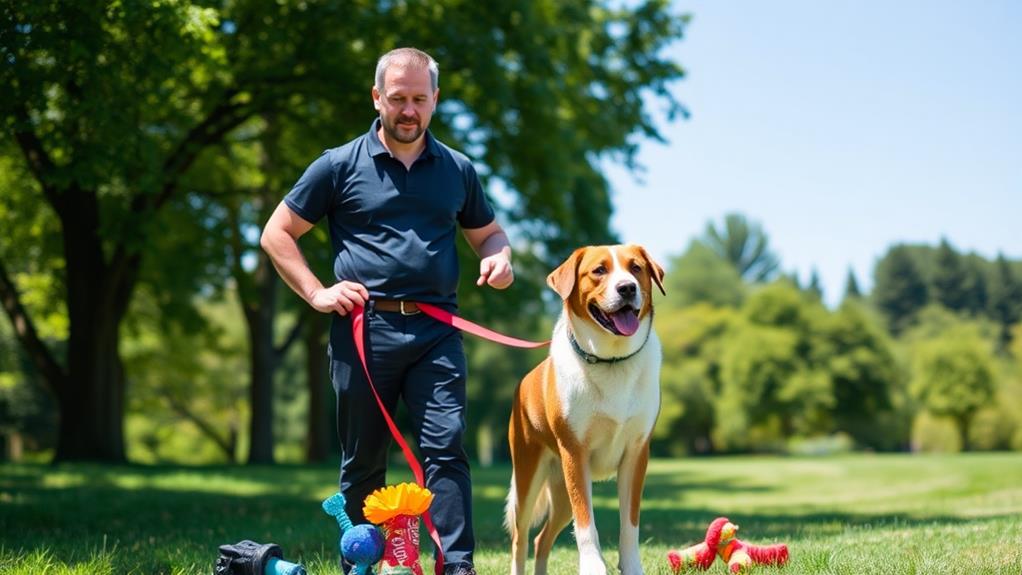To become the alpha in dog training, start by understanding your dog's behavior. Observe their body language and recognize their motivations. Next, establish clear boundaries with consistent rules and routines. Use positive reinforcement to reward desired actions, ensuring you provide immediate feedback. Be patient and consistent; practice regularly and focus on rewarding successes. Finally, build trust and respect by spending quality time together, fostering a safe environment. By following these steps, you'll enhance your bond and create a more obedient companion. Stick around, and you'll uncover even more effective strategies for successful training.
Understand Canine Behavior
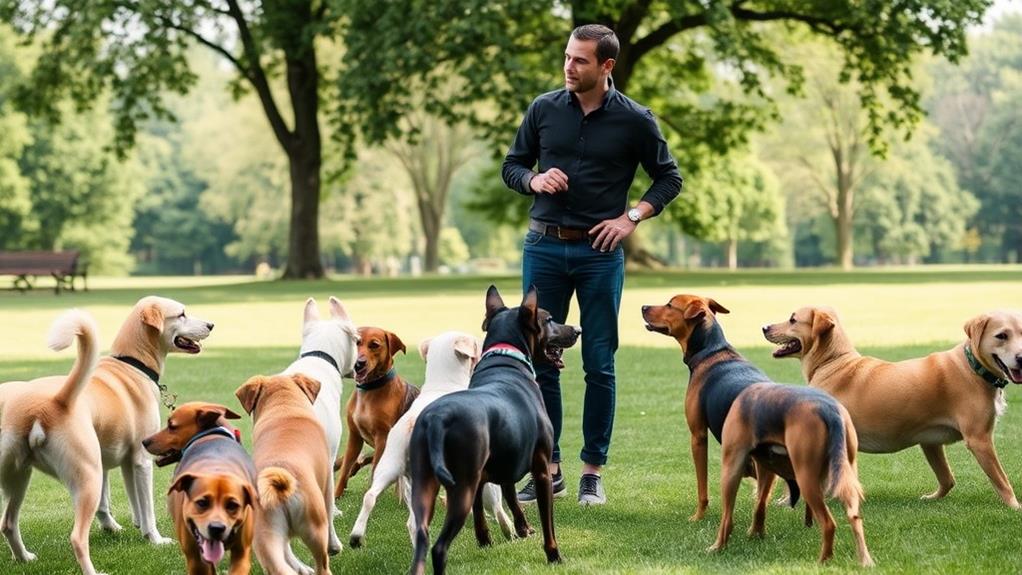
To truly grasp dog training, you need to dig into canine behavior first. Understanding how dogs think and act is indispensable to shaping their responses. Dogs communicate through body language, vocalizations, and even facial expressions. Pay attention to these signals; they'll tell you a lot about how your dog feels. For instance, a wagging tail doesn't always mean happiness; it can also indicate excitement or anxiety.
Every breed has specific traits, and recognizing these can help you tailor your training approach. Some dogs are more independent, while others thrive on teamwork. Learn your dog's motivations—what excites them, what scares them, and what makes them tick. This knowledge allows you to create a positive training environment that resonates with your dog's instincts.
Reinforcement plays a key role in shaping behavior, so use rewards your dog truly values. Whether it's treats, praise, or playtime, make sure your dog knows what behaviors earn those rewards. Finally, patience is essential. Behavioral changes take time, and understanding your dog's perspective will make the training process smoother for both of you. Embrace their quirks, and you'll build a strong foundation for successful training.
Establish Clear Boundaries
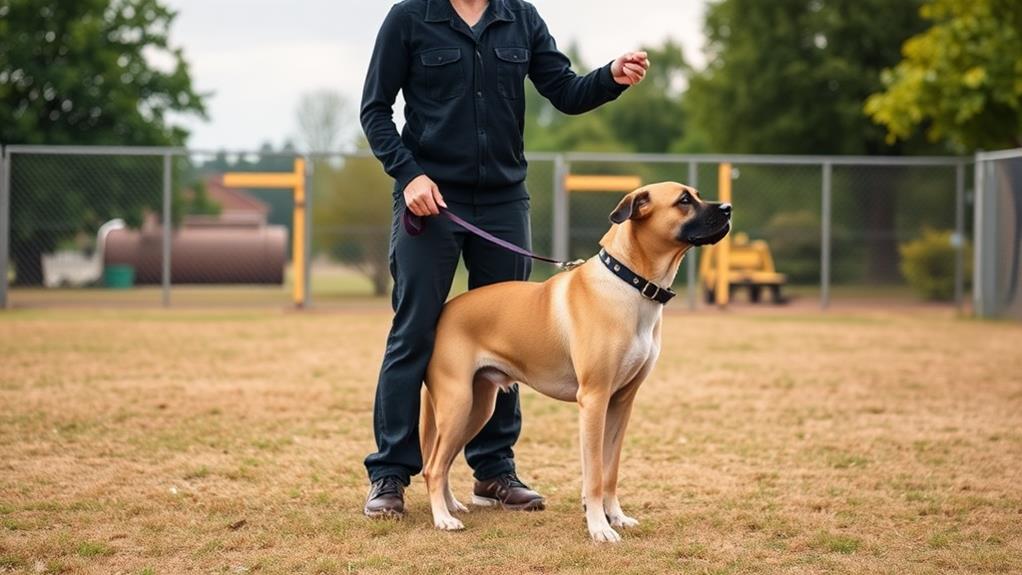
Establishing clear boundaries is essential for effective dog training. When your dog knows what's expected, they're more likely to respond positively. Start by defining specific rules for your home and stick to them consistently. For example, decide whether your dog is allowed on the furniture or which areas in the house are off-limits.
Next, establish a consistent routine. Dogs thrive on structure, so set regular times for feeding, walks, and playtime. This predictability helps your dog understand their place in your household.
You should also enforce boundaries consistently. If you allow your dog on the couch one day but scold them for it the next, they'll become confused. Consistency is key in reinforcing your rules.
Additionally, be mindful of your own behavior. If you give mixed signals, your dog won't know what to expect. For instance, if you let your dog greet guests but later reprimand them for jumping, it creates uncertainty.
Use Positive Reinforcement
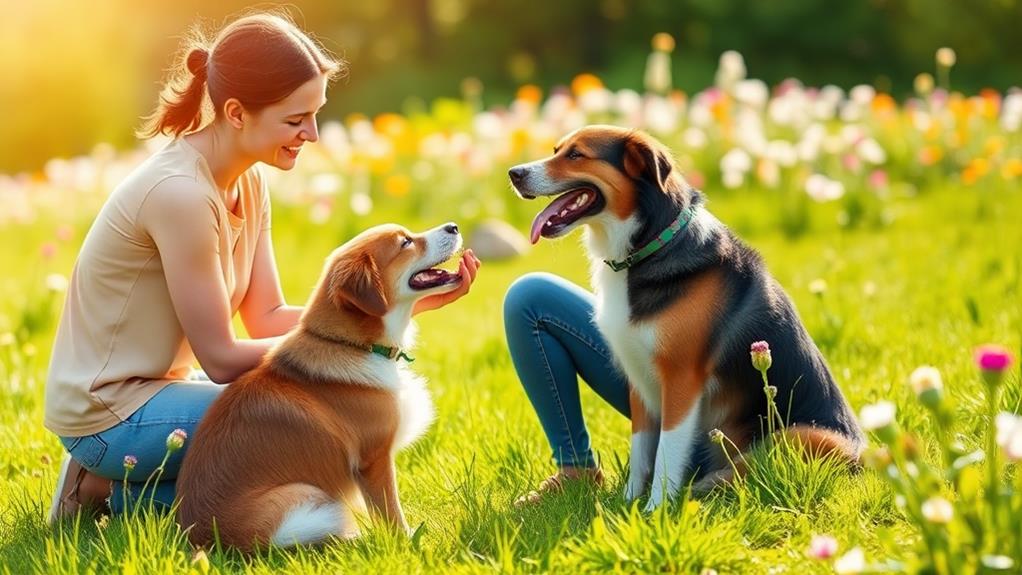
One of the most effective ways to train your dog is through positive reinforcement. This method involves rewarding your dog for desired behaviors, which encourages them to repeat those actions. Instead of punishing mistakes, focus on what your dog does right. It's not just about treats; praise, toys, and playtime can also serve as rewards.
Here's a quick reference to help you with positive reinforcement:
| Behavior | Reward | Timing |
|---|---|---|
| Sit | Treat or praise | Immediately |
| Come when called | Playtime | Right after they arrive |
| Stay in place | Favorite toy | As soon as they stay |
| Walk nicely on a leash | Extra treats | As you walk together |
When you consistently reward good behavior, your dog learns to associate the action with a positive outcome. This not only strengthens your bond but also builds trust. Remember, the key is to keep rewards timely and relevant to ensure your dog understands what they're being praised for. By using positive reinforcement, you create a happier, more engaged training experience for both of you.
Be Consistent and Patient
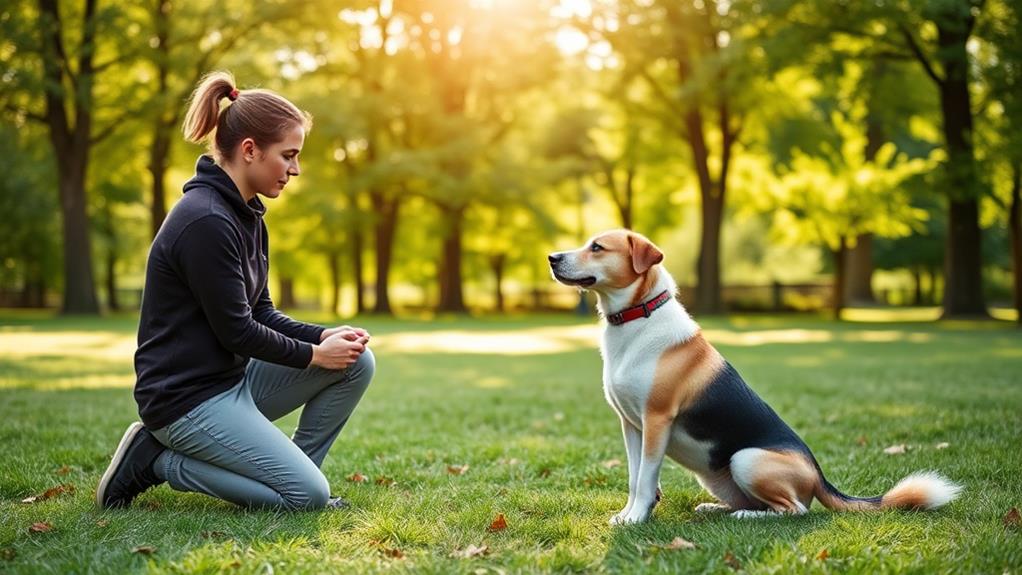
Consistency and patience are indispensable elements in successful dog training. When you commit to a consistent approach, your dog will better understand what you expect from them. This means using the same commands, signals, and rewards every time. If you're inconsistent, your dog might get confused and may not learn effectively.
Being patient is equally important. Training takes time, and every dog learns at their own pace. By showing patience, you foster a positive learning environment.
Here are some key points to keep in mind:
- Set clear rules: Establish boundaries and stick to them to avoid confusion.
- Practice regularly: Short, frequent training sessions are more effective than long, infrequent ones.
- Ignore mistakes: Don't scold your dog for errors; focus on rewarding correct behavior instead.
- Celebrate small successes: Acknowledge progress, no matter how minor, to keep motivation high.
Build Trust and Respect
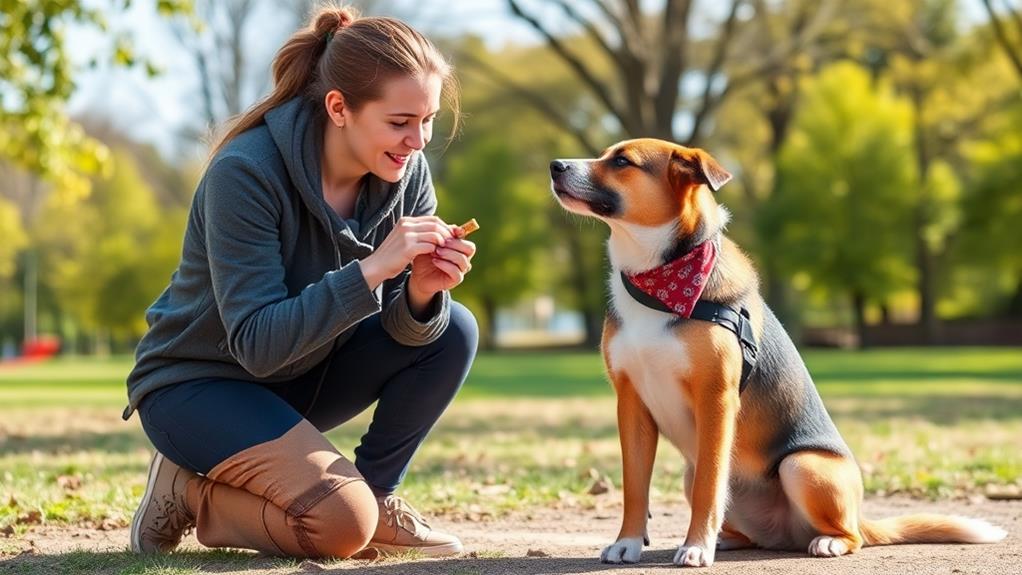
Building trust and respect with your dog is pivotal for effective training and a strong bond. When your dog knows they can rely on you, they're more likely to respond positively during training sessions.
Start by establishing a routine. Dogs thrive on consistency, so setting a regular schedule for feeding, walks, and training creates a sense of security.
Next, use positive reinforcement. Rewarding good behavior with treats, praise, or playtime not only encourages them to repeat those behaviors but also builds trust. They'll see you as a source of good things, reinforcing your bond.
Be mindful of your body language. Dogs are incredibly perceptive and can pick up on your emotions. Stay calm and assertive, and avoid harsh tones or aggressive gestures. This helps your dog feel safe and respected.
Lastly, spend quality time together outside of training. Play games, go for walks, or simply relax on the couch. These moments strengthen your relationship and deepen their trust in you. Remember, building trust and respect takes time and effort, but it's the foundation for successful training and a harmonious partnership.
Frequently Asked Questions
What Are the Signs of an Alpha Dog in a Pack?
An alpha dog in a pack often displays confident posture, assertive behavior, and control over resources. You'll notice them leading the pack, initiating interactions, and maintaining a calm demeanor, establishing dominance without aggression.
How Do I Correct My Dog's Bad Behavior Effectively?
How can you effectively correct your dog's bad behavior? Start by establishing clear rules and consistently enforcing them. Use positive reinforcement, redirect unwanted actions, and remain patient; your dog will learn over time with your guidance.
Can I Train Multiple Dogs Together Successfully?
Yes, you can train multiple dogs together successfully! Just guarantee you maintain focus, use consistent commands, and reward good behavior. It is crucial to create a structured environment, so each dog learns effectively without distractions.
What Should I Do if My Dog Is Aggressive?
If your dog's aggression is a storm brewing, take a step back. Assess the triggers, consult a professional trainer, and practice positive reinforcement. Patience and consistency will help your dog find calm and confidence.
How Do I Know if My Training Methods Are Working?
To know if your training methods are working, watch your dog's behavior closely. Look for positive changes, like improved focus and responsiveness. If your dog seems more relaxed and engaged, you're likely on the right track.
Conclusion
As you step into the world of dog training, remember that becoming the alpha isn't about domination; it's about connection. Picture your dog looking up at you, eyes bright with trust, ready to follow your lead. With every boundary you set and every moment of patience you show, you're not just training a pet—you're building a bond. So, take a deep breath and step forward, because the journey to a harmonious partnership is just beginning.

